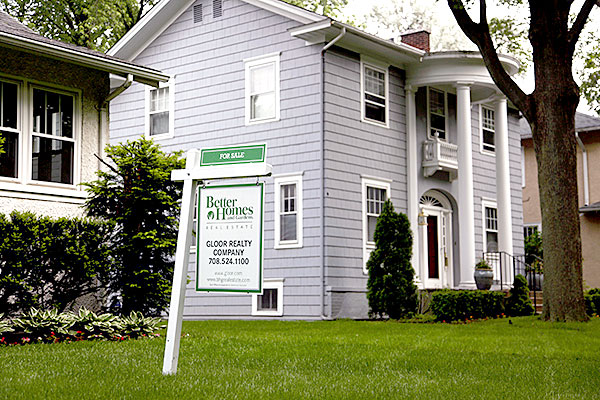
Photo: Keri Wiginton/Chicago Tribune
The process of buying a house is enough to turn anyone bug-eyed, but a recent study from a trio of Chicago academics suggests that when it comes time to sign the mortgage papers, buyers need to focus carefully on the forms in front of them.
Using technology that tracks people’s eye movements, the researchers found that many home buyers who are signing mortgage documents pay little attention to details that can cost them later, such as adjustable mortgage rates. And while the Consumer Financial Protection Bureau is getting ready to roll out new, easier-to-understand disclosure forms for mortgages this summer, one of the Chicago researchers suggests that, at least in a small way, the forms may be a step away from clarity for mortgage borrowers.
When closing on their loans, buyers tend to scan over the forms mostly looking for information that supports what they already believe, says Jessica Choplin, the DePaul assistant professor of psychology who ran the study with Debra Pogrund Stark, a professor at the John Marshall Law School, and Mark Leboeuf, a DePaul graduate student in psychology.
“So if you tell [the borrowers] that the interest rate is, say, four percent, they’ll look over the forms, and once it’s confirmed, they’ll stop and won’t keep looking to find, oops, it adjusts upward [later in the life of the loan],” Choplin said. In April, Choplin and her co-authors published a paper in the Yale Law Journal where they demonstrated that HUD-1 forms that were created in the wake of the mortgage collapse of the mid-2000s dramatically increased borrowers’ ability to find information on their loan terms. But in one test (see table 3), distracting buyers while they were looking over the forms—either the old ones or the new, clearer ones—caused comprehension to plummet.
“In a situation where there’s a lot of information involved—contracts and things like that—people can easily be misdirected,” Choplin said, “either intentionally by unscrupulous [people] or even sometimes by people with good intentions to help.” Thus, it’s important to ask for quiet while going over the forms—and to actually go over the forms.
The team’s research is specifically about how people read the information on interest rate adjustments, a lending type that is far less common now, after the housing bust. But Choplin says the same sorts of distractibility and quick-scanning errors may stop people from noticing early-payment penalties, late fees and life-of-the-loan payout information, “especially if it’s buried where it’s less likely to be read.”
Some information that was placed better on the current forms than on their predecessors now appears destined for a lesser spot on new forms that CFPB is readying, Choplin says. Both the current and the proposed forms clearly indicate whether the interest rate can go up, she notes, but on the proposed forms, “it doesn’t say how high the rate might go, whereas the current form puts a number on how high it can get,” she says.
Choplin worries that borrowers will leave the closing with no idea how high their interest rate, and thus their monthly house payment, can go in coming years. On Table 1 in the article, the very low percentages of borrowers who knew what their maximum payment would be backs up her idea that people need a lot of help on this one. But with the new forms, she says, “unfortunately we might be going a little bit backwards.”
No matter what happens with the new disclosure forms, Choplin, who used to practice real estate law, says her advice to borrowers is to have a lawyer go over all the forms. “From a public policy standpoint,” she says, “we have advocated that people should get mortgage counseling from someone who understands how mortgages work. This whole strategy of using disclosures to protect consumers probably isn’t going to be sufficient.”


